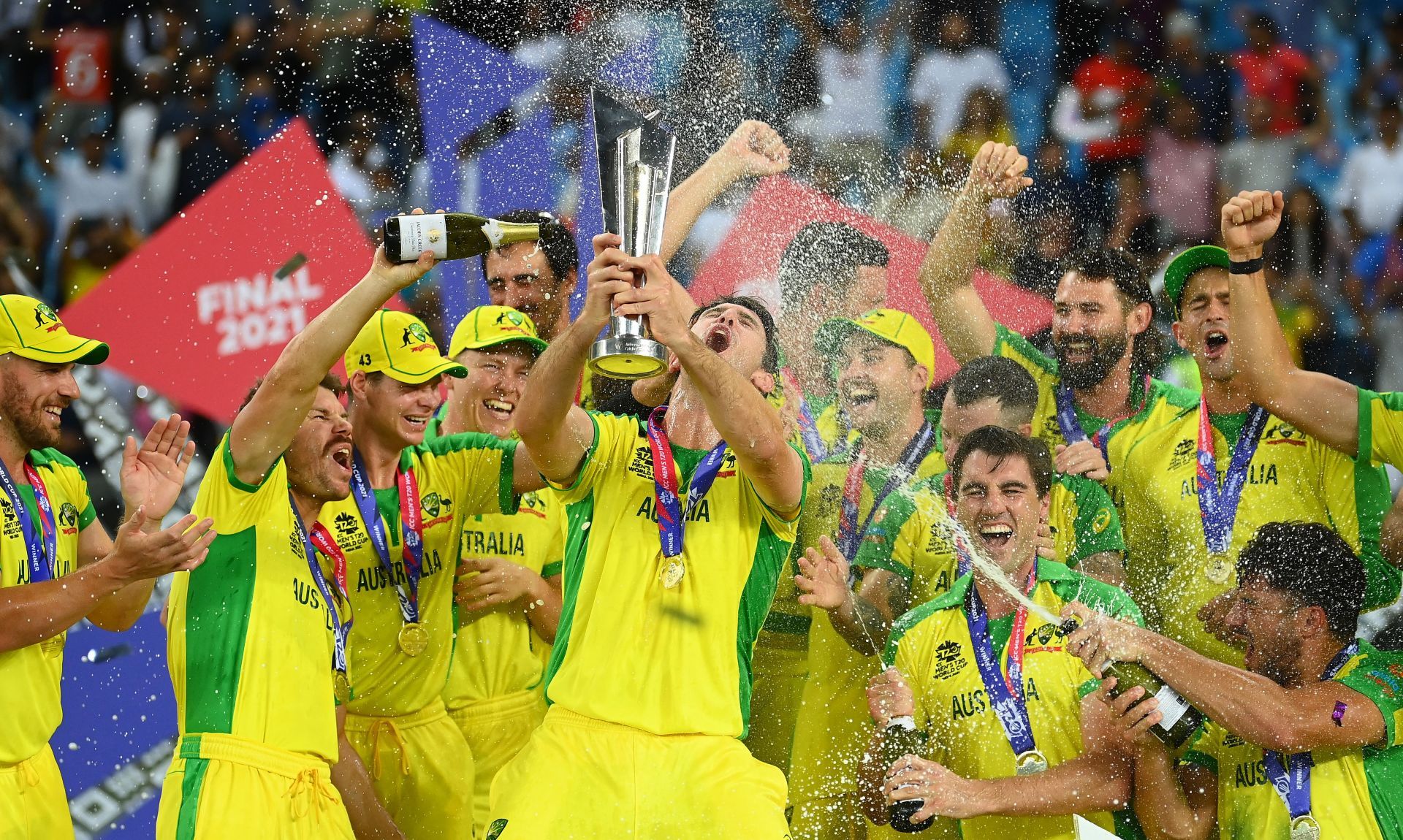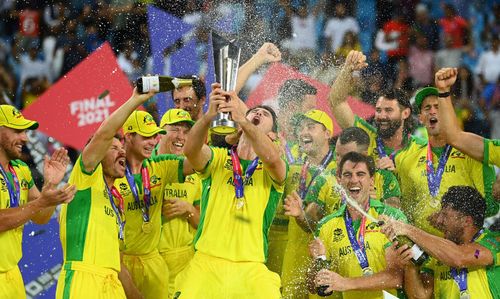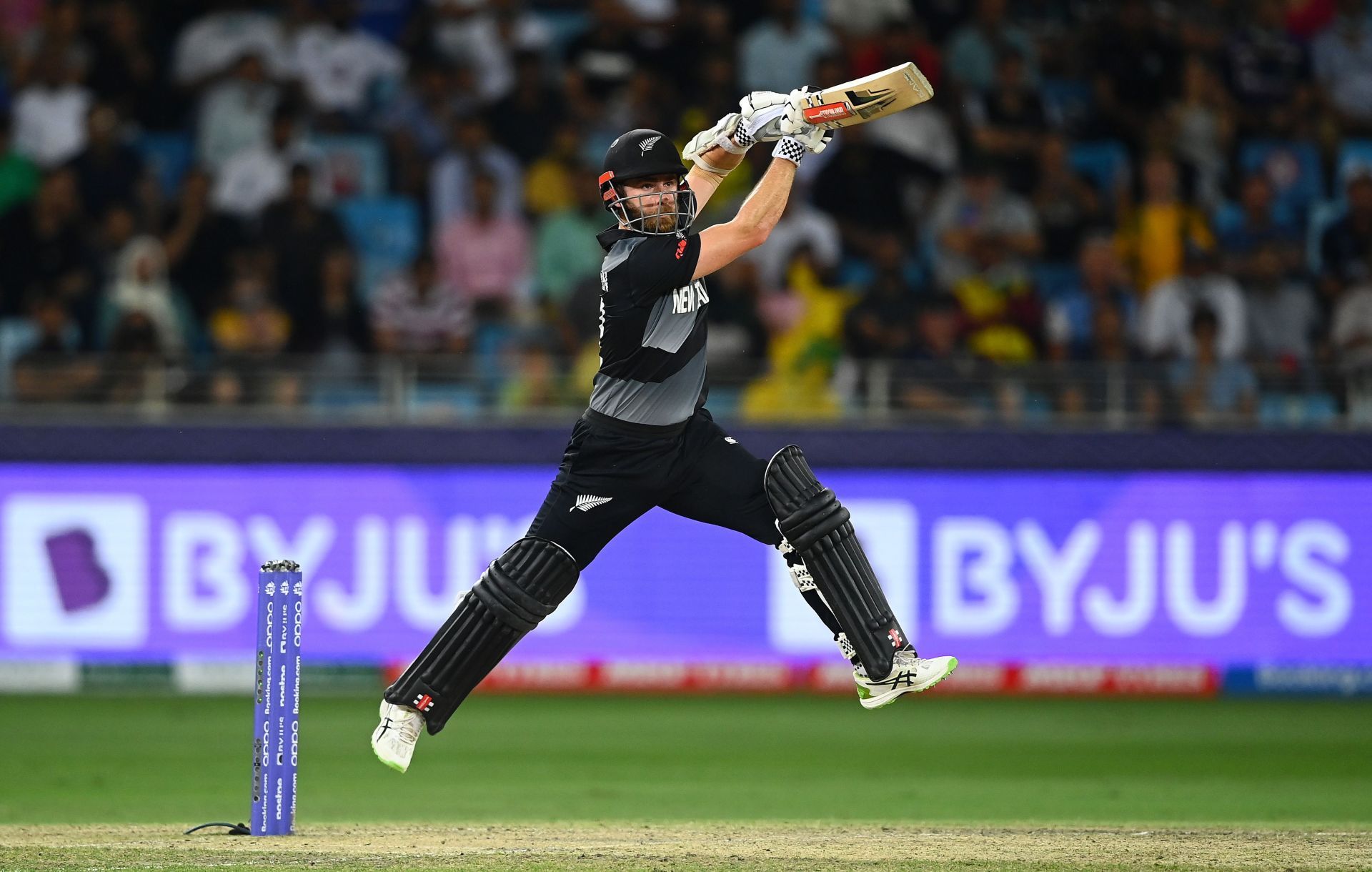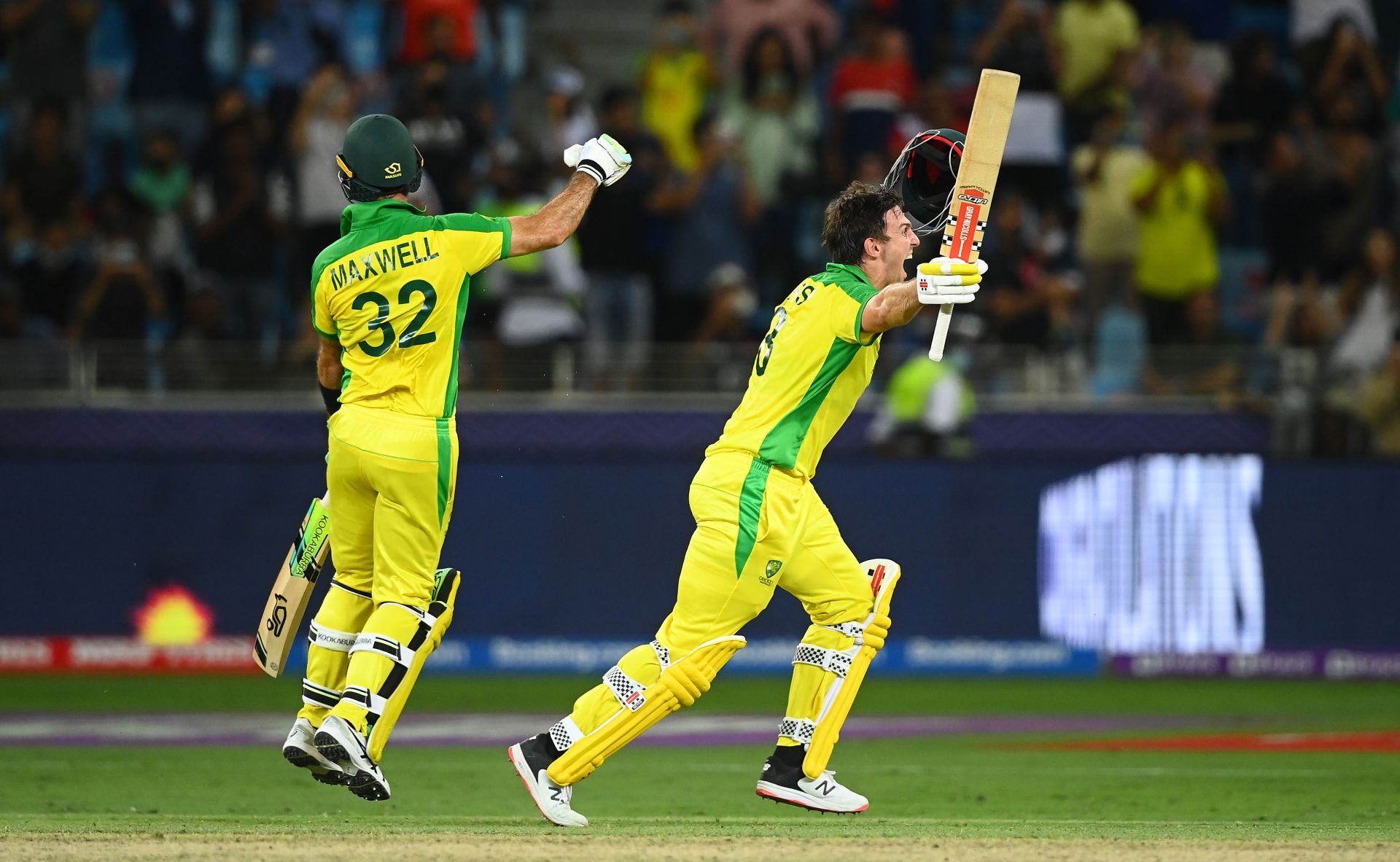
Mitchell Marsh and Kane Williamson - A tale of two contrasting knocks | ICC T20 WC 2021

Before Kane Williamson and Mitchell Marsh came to the party last night, the record for the fastest 50 in an ICC T20 World Cup final was held by the last two players in the world you would expect to hold it - Kumar Sangakkara and Joe Root.
Sangakkara's came in 2014 against Pakistan, while Root came in 2016 against West Indies. Yet, when the day ended, the record had already changed hands not once, but twice.
The Kiwi skipper ended up scoring 85 runs— the highest ever score in a T20 World Cup final, tied with Marlon Samuels. But the Australian soon followed it up with a knock of 77* that led his team to victory.
The two innings by the No.3 batsmen from either side, however, could not have been more different.
Kane Williamson - not just the best Test batsman in the world

With the array of strokes he plays, people very rarely associate Kane Williamson with T20 cricket. He has all the typical test match shots in his arsenal— the drive, the pull and the cut to third man.
When Kane Williamson began this particular knock, that looked to be the case there too. Only 1 run came off the first 7 deliveries he faced. His first boundary came only in the 14th delivery he faced, which was funnily enough bowled by Mitchell Marsh himself. His third boundary of the knock should have, in all likelihood been the end of his time at the crease.
Instead, Josh Hazelwood put down a regulation catch at long leg. That over by Mitchell Starc ended up going for 19. Kane Williamson, and New Zealand by extension, had woken up.
Guptill perished at the other end at the hands of Adam Zampa the next over, but the following saw Glenn Maxwell hit for 2 sixes.
After scoring only 40 runs in the first 8 overs, New Zealand had scored 74 off the next seven. All thanks to Kane Williamson, who had switched gears out of nowhere without switching the shots he played. Instead of going for ones and twos, Kane had decided to get sixes off them.
Is that even legal?
The 16th over by Mitchell Starc went for 22 runs. 4 fours and 1 six adorned the third over by Australia's lead bowler, gifted to him by New Zealand's lead batter. The first two fours had been strokes of luck, two thick edges running to the boundary as they often happen in T20s.
The six hit off the third ball was Kane compensating for the edges with so much middling that time almost slowed down. A slice over backward point fetched another four runs off the fifth ball.
The sixth ball of the over was met with one of the shots of the tournament, using the width of the delivery to knock it finer and to the right of the short third man.
Williamson did eventually fall to Josh Hazlewood in the 18th over, but by then he had done what any of the most reputed T20 batsmen in the world could do, and more often, could onlydream of doing. All this while being dismissed as a batsman who was not suited for T20s.
Mitchell Marsh - Rising to the top after a long wait

But then, Mitchell Marsh happened. The antithesis of the Kane Williamson knock.
The first ball he faced was proof enough - a swat over deep backward square leg for a six off Adam Milne. The next two balls were dispatched with equal disdain for boundaries.
When Mitchell Santner came on after the powerplay, Marsh went down on one knee and hoisted him for a six over deep square leg. Jimmy Neesham's first ball was met the same fate.
Every new bowler was welcomed the same way. Any bowling change Kane made was met with the same resistance.
Santner came on in the 12th over and the only bad ball he bowled was whipped for a four. Warner had been the one taking care of Ish Sodhi's spin, so when he departed, New Zealand had been given a glimmer of hope.
Well, not in the mood Mitchell Marsh was in. A six and a four to show the Kiwis who was in charge. 16 runs off their main spinner.
With Maxwell joining in, Marsh did not have to do much after that. It was enough to take singles and give him the strike, which Marsh did with characteristic cleverness.
He still scored a boundary each off Tim Southee and Trent Boult's last overs, just to be sure. And made things just a bit less tense.
Marsh and Kane - same, but different

If Kane Williamson's knock was about cautiously taking control first and then mounting an onslaught against the bowlers, Marsh's was the other way around. It was attack first and easing off once the bowlers had finally woken up.
It could also be quite analogous to the way in which their respective teams play their cricket. New Zealand's calm and cautious approach that is all about waiting for their moment to attack while Australia's gung ho approach is more risk for more reward.
To see both knocks in the same match would have been every cricketing fan's dream. And to see them in the final of a World Cup makes it all the more fascinating.
